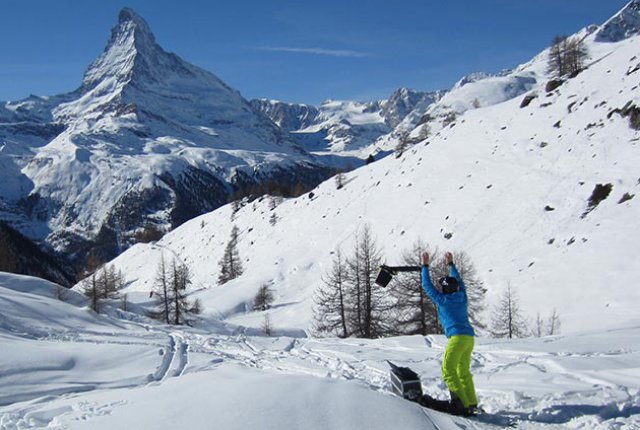 Switzerland’s flying robots used for 3D aerial mapping have been a global commercial success. But security and privacy concerns could curb the enthusiasm of a sector which is in full swing.
Switzerland’s flying robots used for 3D aerial mapping have been a global commercial success. But security and privacy concerns could curb the enthusiasm of a sector which is in full swing.
“Walk straight in” is written on the doors to the offices says of the start-up senseFly outside Lausanne in western Switzerland. About 40 young engineers and technicians work in a laid back atmosphere in Ecublens for the country’s leading producer of civilian UAS. Most of them are model and robotics enthusiasts working on small flying objects operated via remote control.
The company produces about 60 UAS every month and has clients in 45 countries. Such flying machines look like fat bees and come at a price of between CHF10,000 and CH20,000 ($10,335 and $20,670) a piece.
“With their in-built high resolution cameras our UAS can for example measure the amount of minerals dug up from a mine or gauge the damage done to a crop by a pesticide,” says Jean-Christophe Zufferey, the founder and owner of senseFly.
In nearby Eclépens, Holcim – a world leader in cement production – has started using the drone technology to provide the authorities with information about the amount of gravel extracted from the local quarry.
“What used to take up to five days now is done in half a day,” says Sonja Betschart, marketing representative of the Pix4D. This start-up, which works closely with senseFly, develops the computer software to analyse and model 3D images of the aerial surveys.
The advantages of the miniature flying robots are unlimited if Betschart and Zufferey are to be believed. They are cheaper, quieter and less polluting than an airplane or a helicopter. The loss of a small flying machine is by far less dramatic and they are affordable for nearly everybody.
“Our big challenge is to convince the market. The sector is not used to major changes and we may be perceived as a competitor for some surveyors,” says Betschart.
Nonetheless, the promoters see enormous business opportunities for themselves and indeed for the aviation industry. There seems to be no limits for the technology for the police, in agriculture, in cases of natural disasters and for the news coverage for sport events.
A legal amendment scheduled for September 2015 is expected to pave the way for the commercial use of UAS in the United States. The business with the flying robots is estimated to generate revenue of about $90 billion over a decade, creating up to 100,000 high-skill jobs.
However the technology has also found plenty of critics. It is easy to demonise the flying machines as killer weapons used increasingly by armies. But the devices produced by senseFly have next to nothing in common with the military. “I know that UAS have a bad image,” admits Zufferey.“There is clearly a need to discuss the use of UAS by the media to spy on celebrities or for police surveillance. But let’s be clear: The UAS that we produce are simply a mapping tool. The pictures we gather don’t allow us to recognise faces or car plates.”
Zufferey says security and privacy or rules about the use of the airspace are the issues most likely to slow down a further expansion of the UAS industry. A major problem are the different regulations about the use of airspace in different countries.
Lawmakers have been trying to find a common solution for nearly ten years, but there seems to be insufficient coordination between individual countries.
Legislation in Switzerland in contrast is more flexible. UAS weighing less than 30 kilogrammes do not need a licence. The person operating the device however has to make sure the flying device is always visible to the eye.
As for the production of flying robots Switzerland has had a leading role. The Federal Institute of Technology in Lausanne played a pioneering role at the turn of the century. This is acknowledged at major conferences around the world, according to Zufferey.
The Lausanne-based institute has developed a special flying machine, AirBurr, which can take off again after banging into a wall or knocking into another object.
Inspired by the behaviour of insects, this technical feat is particularly useful in gaining access to difficult environments, as Zufferey points out. UAS can be used in gas pipelines or in dilapidated industrial complexes.
Researchers at the Federal Institute of Technology in Zurich for their part developed little flying robots which can play table tennis or construct a brick wall. The team of Raffaello d’Andrea built autonomous machines which produce such feats thanks to a complex system of movements.
But it is still a long way to go from the technology to the practical application. Experts compare the situation of the UAS market with that of the computers before the internet made a breakthrough.
The success of companies such as senseFly and Pix4D lets potential investors get a taste of things to come.
Source: Swiss Info CH
